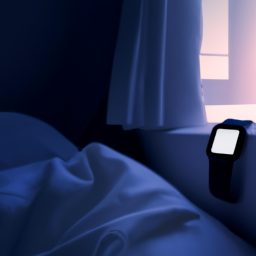The evolution of wearable technology has reached a remarkable milestone, particularly in the realm of smartwatches. As someone who has been testing wearables for years, I have witnessed firsthand the rapid advancements in this field. Recently, I was astonished by my smartwatchs ability to detect and analyze my dream patterns, a feature that highlights the increasing sophistication of these devices. In my experience, the integration of advanced sensors and algorithms in smartwatches has significantly improved their contextual awareness. These devices are no longer limited to tracking physical activities or monitoring heart rates; they are now capable of providing insights into our sleep cycles and even the nature of our dreams. This development raises intriguing questions about the implications of such technology on our understanding of sleep and consciousness. To understand how smartwatches can read dreams, it is essential to delve into the technology behind them. Most modern smartwatches are equipped with a variety of sensors, including accelerometers, gyroscopes, and heart rate monitors. These sensors collect data on movement, physiological responses, and sleep patterns throughout the night. For instance, research shows that during REM (Rapid Eye Movement) sleep, which is the stage most associated with vivid dreaming, our heart rates and breathing patterns change. By analyzing these variations, smartwatches can infer when a user is likely experiencing intense dreams. Experts in sleep science agree that the ability to monitor sleep stages can provide valuable insights into our mental and emotional health. According to peer-reviewed research, the quality of our sleep is closely linked to our overall well-being. Sleep disturbances can lead to various health issues, including anxiety and depression. Therefore, having a device that can monitor and analyze sleep patterns could be a game-changer for individuals seeking to improve their sleep quality. The implications of this technology extend beyond personal health. As observed, the data collected by smartwatches can contribute to broader research on sleep and mental health. For example, aggregated data from users can help researchers identify trends and correlations between sleep patterns and various psychological conditions. This could lead to more effective interventions and treatments for sleep-related issues. However, while the potential benefits of this technology are significant, there are also concerns regarding privacy and data security. As smartwatches collect sensitive information about our sleep and dreams, it is crucial to ensure that this data is handled responsibly. Regulatory agencies report that users should be informed about how their data is used and stored. Transparency in data collection practices is essential to build trust between consumers and technology providers. Moreover, the accuracy of dream detection is still a topic of ongoing research. While my smartwatch has provided insights into my sleep patterns, it is important to approach these findings with caution. Experts note that while wearables can offer valuable data, they are not infallible. The interpretation of dream states based on physiological data is complex and may not always reflect the true nature of our subconscious experiences. In my analysis, the integration of dream detection in smartwatches represents a significant leap forward in wearable technology. It opens up new avenues for understanding the human mind and its relationship with sleep. However, as with any technological advancement, it is essential to balance innovation with ethical considerations. Ensuring user privacy and data security should remain a priority as we explore the capabilities of these devices. Looking ahead, I predict that the development of smartwatches will continue to evolve, incorporating even more sophisticated algorithms and sensors. Future iterations may offer deeper insights into not only our sleep patterns but also our emotional states and cognitive functions. As research confirms the link between sleep and mental health, the demand for such technology is likely to grow. In conclusion, the ability of smartwatches to read dreams is a fascinating development that underscores the potential of wearable technology. While the implications for personal health and broader research are promising, it is crucial to navigate the associated challenges responsibly. As we embrace these advancements, we must remain vigilant about privacy and data security, ensuring that the benefits of this technology are realized without compromising individual rights. The journey of wearable technology is just beginning, and its future holds exciting possibilities for enhancing our understanding of sleep and the human experience.
I've been testing wearables for years, and I was still shocked by my smartwatch's ability to read my dreams

TRENDING NOW
WORLD
Global Messaging Trends: Can Local Apps Like Arattai Overtake Giants?
44% 🔥
POLITICS
Accusations fly over whether Republicans or Democrats 'own' shutdown
35% 🔥
POLITICS
Rep. Mike Haridopolos, R-Fla., talks about the government shutdown
34% 🔥
POLITICS
What happens now that the government has shut down. And, a pricing deal with Pfi...
26% 🔥
POLITICS
Married, but no connection: Reality of silent divorces in Indian homes
31% 🔥
POLITICS
Netanyahu's apology to Qatar, phone on Trump's lap: A telling White House photo
38% 🔥
MOST READ
SPORTS
Week 5 NFL odds, lines, betting picks, spreads: 2025 predictions: Model backs Sa...
55% 🔥
SPORTS
Predicting every undefeated college football team's first loss: Will anyone beat...
36% 🔥
SPORTS
Tigers Lefty Tarik Skubal Deserves Second Straight AL Cy Young Award
54% 🔥
SPORTS
Jets Get Official Braelon Allen Injury Diagnosis
61% 🔥
SPORTS
Gill: India won't be 'looking for any easy options' against West Indies
49% 🔥
SPORTS
Phil Mickelson takes a jibe at golf during friendly banter with ex-LIV Golf CEO’...
39% 🔥
